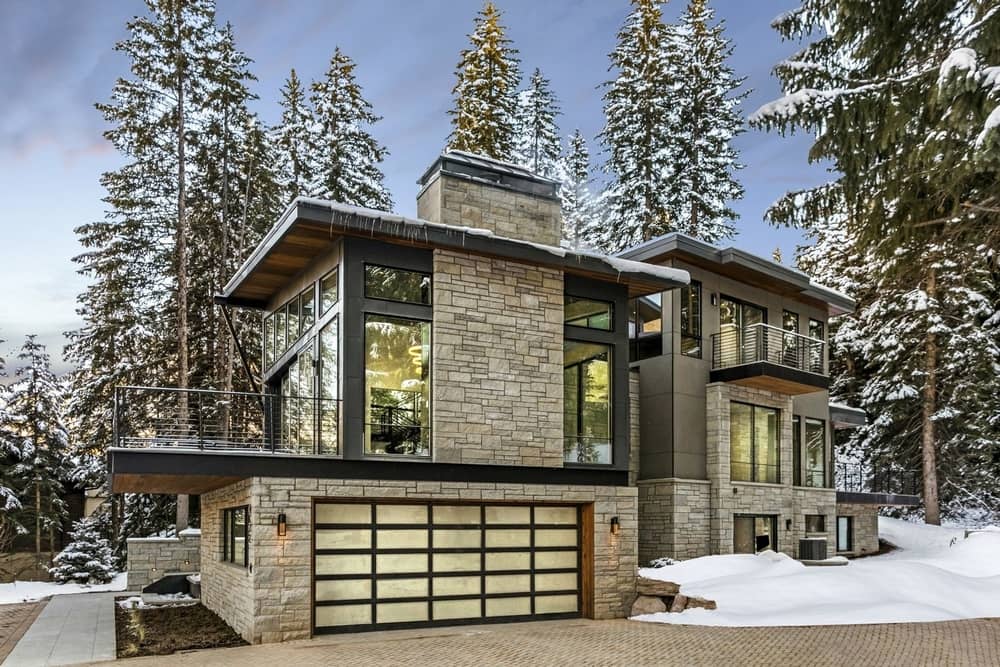Best siding for cold climates requires careful consideration of material properties, installation techniques, and long-term durability. This guide explores the advantages and disadvantages of various siding options, including vinyl, fiber cement, and wood, focusing on their performance in freezing temperatures, resistance to moisture and ice damage, and overall lifespan in harsh winter conditions. We’ll delve into optimal installation practices, essential maintenance procedures, and cost considerations to help you make an informed decision for your home.
From understanding R-values and insulation properties to addressing challenges related to cold-weather installation, we aim to equip you with the knowledge necessary to choose the best siding material that provides both protection and aesthetic appeal for your home in a cold climate. We’ll compare the thermal performance, moisture absorption, and resistance to cracking and splitting for each material, providing a comprehensive overview to guide your selection process.
Material Properties for Cold Climate Siding
Choosing the right siding for a cold climate requires careful consideration of material properties that ensure durability, energy efficiency, and resistance to the harsh conditions. Factors such as thermal performance, moisture absorption, and susceptibility to cracking and splitting are crucial in determining the longevity and effectiveness of your siding.
Thermal Performance of Siding Materials
The thermal performance of siding is measured by its R-value, which represents its resistance to heat flow. Higher R-values indicate better insulation. While siding itself doesn’t provide the primary insulation for a home (that’s the responsibility of wall insulation), its R-value contributes to the overall thermal envelope. Vinyl siding typically has an R-value between 0.6 and 0.9, fiber cement siding ranges from 0.2 to 0.4, and wood siding’s R-value varies significantly depending on the thickness and type of wood, generally falling between 0.5 and 1.2. It’s important to note that these values are relatively low compared to wall insulation; however, the contribution of the siding to the overall thermal performance of the building envelope is still significant.
Moisture Absorption and Ice Damage
Moisture absorption is a critical factor in cold climates. When moisture penetrates siding, it can freeze and expand, leading to cracking, splitting, and eventual damage. Vinyl siding is highly resistant to moisture absorption, making it a suitable choice for snowy regions. Fiber cement siding also performs well in this regard, though it can absorb some moisture, which is less problematic than with wood. Wood siding, especially if not properly treated and maintained, is prone to significant moisture absorption, increasing the risk of ice damage and decay. The potential for ice damage is directly related to the siding’s ability to shed water and resist moisture penetration.
Resistance to Cracking and Splitting
The following table compares the resistance of various siding materials to cracking and splitting under extreme cold:
| Material Type | Resistance Rating (Qualitative) | Lifespan in Cold Climates (Years) | Notes |
|---|---|---|---|
| Vinyl | Excellent | 50+ | Resistant to expansion and contraction. |
| Fiber Cement | Good | 30-50 | Can crack under extreme stress; proper installation is crucial. |
| Wood | Fair to Good (depending on type and treatment) | 20-40+ (with proper maintenance) | Prone to cracking and splitting if not properly treated or maintained. Cedar and redwood generally perform better than other softwoods. |
Installation Considerations in Cold Climates
Installing siding in cold climates presents unique challenges that require careful planning and execution to ensure a long-lasting, aesthetically pleasing, and energy-efficient exterior. Factors such as material properties, adhesive performance, and potential for moisture buildup must be carefully considered to achieve a successful installation.
Optimal Installation Techniques in Sub-Zero Temperatures
Working in sub-zero temperatures significantly impacts the installation process for most siding materials. Adhesives may require longer drying times, and some materials become more brittle and prone to cracking. Pre-planning is crucial. For instance, vinyl siding should be stored indoors at a temperature above freezing for at least 24 hours before installation to allow it to acclimate. This prevents cracking or warping during installation. For fiber cement, using heated rollers to ensure proper adhesion of the cement-based adhesive is vital. This allows for sufficient curing time even in low temperatures. Using specialized winter-grade adhesives designed for low-temperature applications is also recommended for all siding types. Furthermore, carefully following manufacturer’s instructions, including recommended temperatures and drying times, is paramount for a successful installation. Using tools and equipment designed for cold-weather operation, such as heated caulking guns, can also improve efficiency and prevent material damage.
Ventilation Behind Siding in Cold Climates
Proper ventilation behind siding is essential in cold climates to prevent moisture buildup, which can lead to mold growth, rot, and structural damage. Moisture can accumulate from several sources, including air leakage, water infiltration, and even the natural release of moisture from building materials. Adequate ventilation allows for the escape of this moisture, preventing damage and improving the longevity of the siding and underlying structure. A step-by-step guide for achieving optimal ventilation includes: 1) Installing a continuous layer of breathable house wrap under the siding to allow moisture vapor to escape. 2) Ensuring sufficient air gaps behind the siding using furring strips or other appropriate methods. This creates a ventilated cavity allowing air to circulate. 3) Incorporating vents at the bottom and top of the wall to facilitate air movement, ensuring both intake and exhaust points. These vents should be protected from direct exposure to the elements to prevent water ingress. 4) Using a vapor barrier on the interior of the wall to prevent moisture from the interior of the house from migrating to the exterior wall assembly. The balance between ventilation and preventing cold air penetration is crucial; over-ventilation can lead to energy loss.
Challenges and Solutions for Specific Siding Materials in Cold Weather
Different siding materials present unique challenges during cold-weather installation. Vinyl siding, for example, can become brittle and prone to cracking in extremely low temperatures. Pre-heating the vinyl panels slightly, as mentioned previously, can help mitigate this risk. Fiber cement siding, while durable, can be more challenging to cut and install in freezing temperatures due to the increased hardness of the material. Specialized cold-weather cutting tools and techniques, such as using a carbide-tipped blade and taking frequent breaks to prevent tool damage, are essential. Metal siding can become extremely cold and may require special precautions to prevent burns from handling or damage from extreme temperature fluctuations. Using insulated gloves and ensuring proper ground connection to prevent static electricity buildup can aid in this process. Regardless of the siding material, ensuring the underlying structure is properly insulated and sealed is crucial to prevent moisture issues and improve overall building performance.
Final Summary
Selecting the best siding for a cold climate involves a multifaceted decision-making process. By carefully weighing the thermal performance, durability, maintenance requirements, and aesthetic preferences of vinyl, fiber cement, and wood siding, homeowners can make an informed choice that ensures both the longevity and beauty of their homes. Remember that proper installation and regular maintenance are crucial regardless of the siding material chosen, maximizing its lifespan and performance in even the harshest winter conditions. This guide provides a solid foundation for making this important investment.

